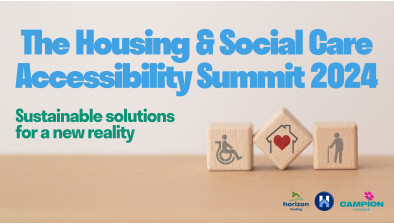Black’s Blog: Understanding housing and dementia

Designing with dementia in mind
Let’s start with the basics. We should build houses and plan communities that people can live in. Ok… which people? I’d like to answer “everyone” but that’s not what we do.
Is the answer “people who can drive, think clearly and are able to walk and climb stairs?” That can’t be the answer because it would be highly discriminatory.
So we build some houses that people with disabilities can live in and the rest for able-bodied people whose cognitive functions are unimpaired.
The trouble is that people change. Footballers and rugby players do well in tenements until they break their legs. Or develop dementia, as some do due to head injuries.
Physical problems are relatively easy to understand, although we still struggle to resolve them because installing lifts and clever design solutions are expensive.
Cognitive impairment of any kind is harder to deal with. What is actually different about a house for someone with dementia? How do you design for that?
It’s not just about the house. It’s about the roads, shops, community centres and buses. The Scottish Government’s draft National Planning Framework has great aspirations for 20-minute neighbourhoods where everything is familiar and within reach. Of course, how far you can get in 20 minutes depends on how well your legs work, and when you’re building a new community, you have to factor that in too.
There is significant expertise in Scotland on design for dementia, cited by the University of Stirling, and there has been an extensive government-backed exercise over the past year to make recommendations and spread good practice. We can make it possible for people with dementia to live safely and enjoyably in the community.
The current episode of the Scottish Housing News Podcast features the co-chairs of the National Housing and Dementia Forum, Lesley Palmer and Ashley Campbell, who have a store of practical knowledge and useful tools. One example is the Environments for Ageing and Dementia Design and Assessment Tool which is freely available.
It’s not just about good physical design. It’s also about sensible joint working between social landlords and health and social care partnerships. No point in building a housing with care facility if you can’t be sure the care will be funded.
You can find the Forum’s report here and information about EADDAT here. A discussion paper has been developed by the Scottish Government to help people respond to a National Conversation on the future of dementia policy in Scotland. Find out more here. The Housing and Dementia Framework is available here.
All episodes of the Scottish Housing News Podcast are available here as well as on the following platforms:








